Celebrate Lunar New Year with these longevity noodles made with chewy Yi Mein and mushrooms, brought together with a savory brown sauce and aromatics. {Vegetarian-Adaptable}
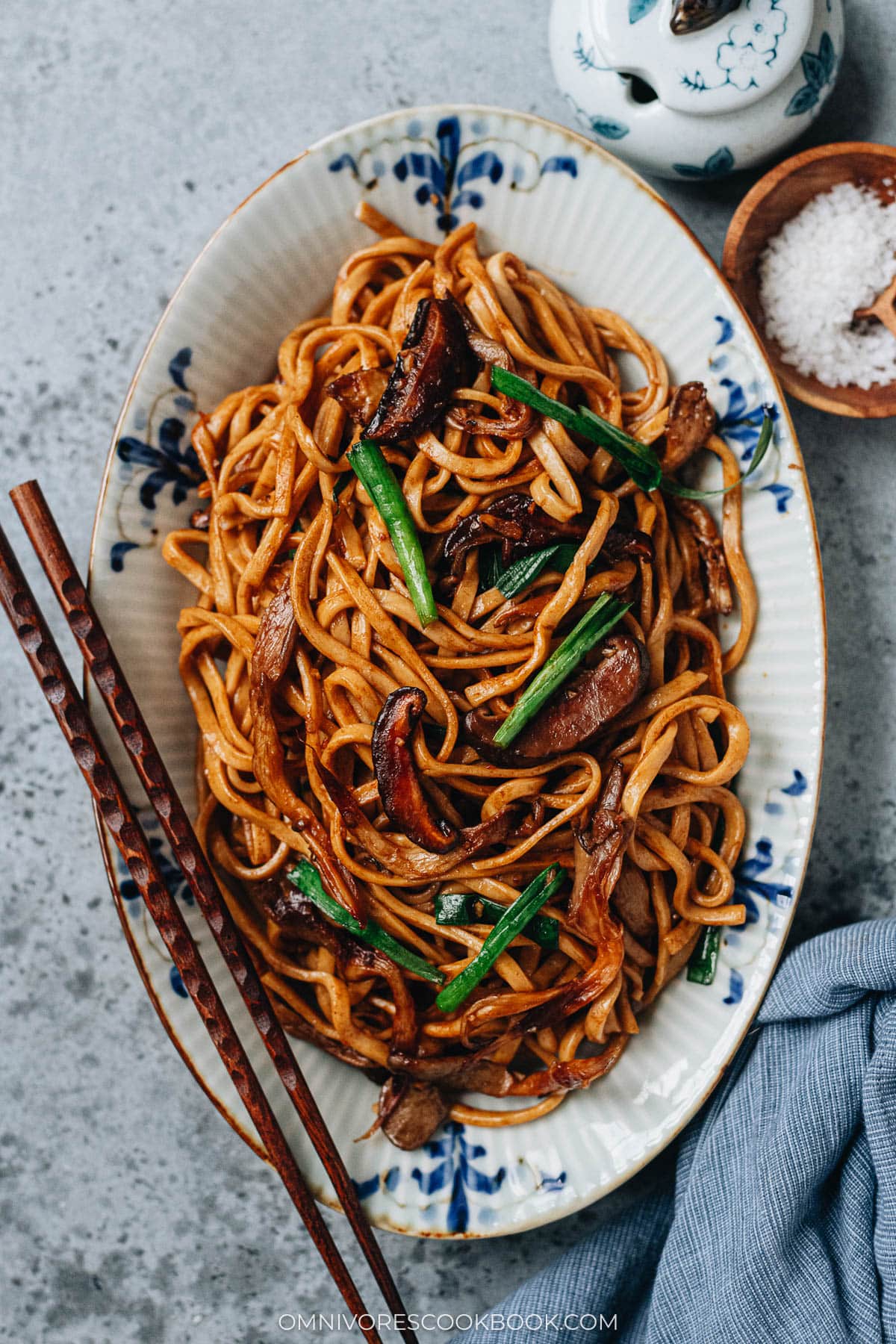
In Chinese culture, noodles are more than just a staple food—they carry a special symbolic meaning, especially during celebrations. Longevity noodles, made with Yi Mein (伊面), are a classic dish served at birthdays, weddings, and festive occasions such as Chinese New Year. Traditionally, Yi Mein is usually made fresh from scratch. The long, unbroken strands represent a wish for a long and prosperous life.
The tradition behind longevity noodles
Yi Mein, also known as E-Fu noodles (伊府面), is the star ingredient of longevity noodles. These wheat-based noodles are pre-fried, giving them a distinctive golden-brown color and spongy texture. Their ability to soak up flavorful sauces makes them ideal for a variety of dishes.
Longevity noodles are traditionally served for:
- Birthdays: Symbolizing health and long life.
- Weddings: Representing a long and happy union.
- Chinese New Year: Wishing prosperity in the coming year.
The key to longevity noodles? Never cut the strands while cooking or serving. The longer the noodles, the greater the blessings!
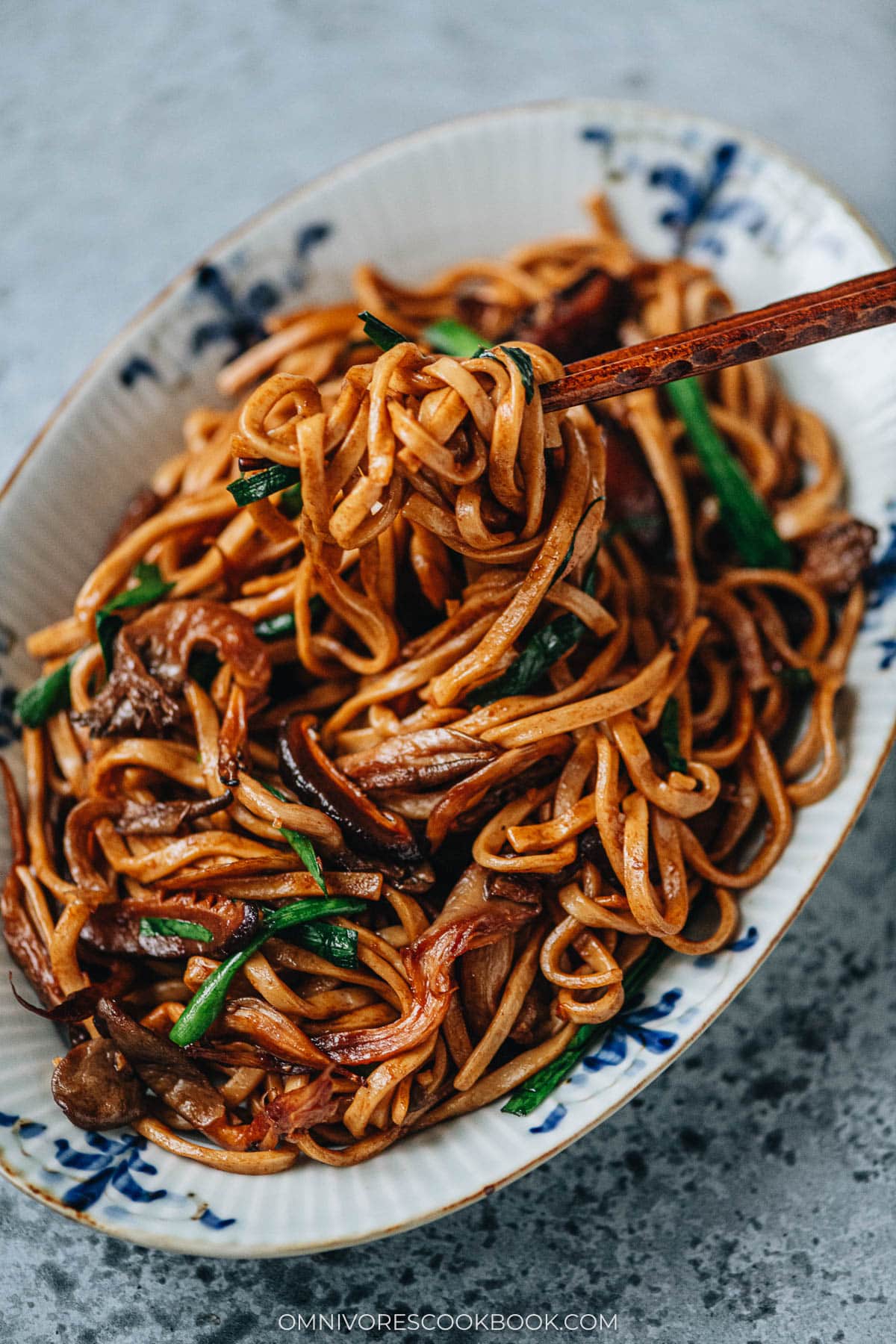
Ingredients for longevity noodles
Yi Mein and other alternative
If you live in an area close to Chinatown or a large Chinese market, you might be able to find packaged Yi Mein noodles. But from my experience, it’s a type of noodle that is rather difficult to find. Sometimes, manufacturers label a thin type of noodles Yi Mein as well, which adds to the confusion. The thin type is commonly used in Northern China for noodle soup.
One of my favorite alternatives to Yi Mein noodles is thick fresh Shanghai noodles (see the picture below). They are thick noodles with a chewy texture, which is perfect for making longevity noodles.
Alternatively, you can also use extra thick udon noodles as a replacement. When none of these is available, you can even use spaghetti noodles boiled until al dente. Spaghetti is a great alternative due to its chewy texture and correct shape.
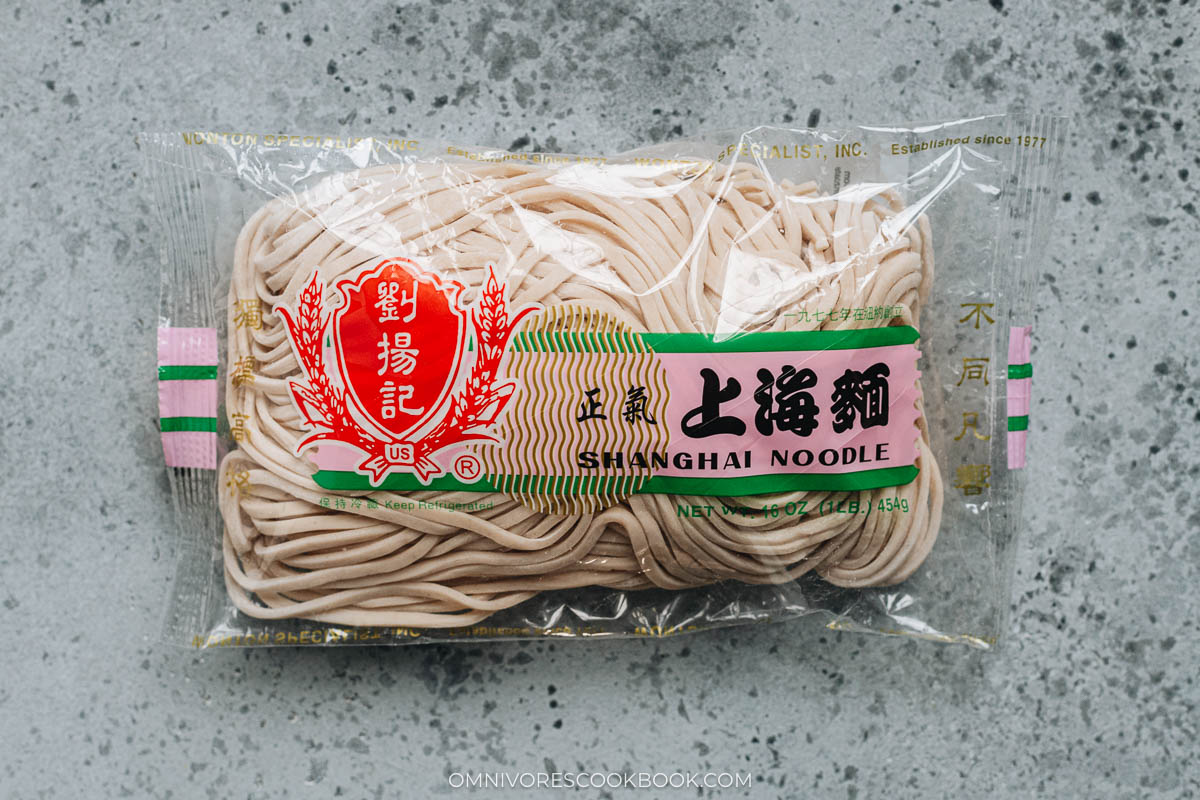
The noodle sauce
Longevity noodles use four simple ingredients for the sauce:
- Shaoxing wine: to deglaze the pan and add a deep umami
- Dark Soy willow: it adds the beautiful dark brown color and a mild caramel taste
- Oyster sauce: it’s another key ingredient to create the delicious savory sauce
- Sugar: a small amount of sugar balances the saltiness and brings out the flavor of the ingredients.
Mushrooms and other noodle topping options
There are many different ways to make longevity noodles. When celebrating Chinese New Year in a restaurant, it’s not uncommon to order lobster with longevity noodles for its festive look. But when making these noodles at home, most home cooks keep them simple because they need to prepare many other dishes for a multi-course celebratory dinner.
You can make the most simple longevity noodles using shiitake mushrooms to add their umami flavor. My recipe uses shiitake mushrooms and oyster mushrooms for added texture. You can also use other types of mushrooms, such as white mushrooms, as a replacement.
TIP
You can also customize your noodles by adding a protein such as shrimp, chicken, or tofu for a more fulfilling meal. To add protein, refer to the method and quantity in my chicken chow mein recipe. Make sure you always marinate the protein before cooking. And cook the protein separately and add it back during the stir fry.
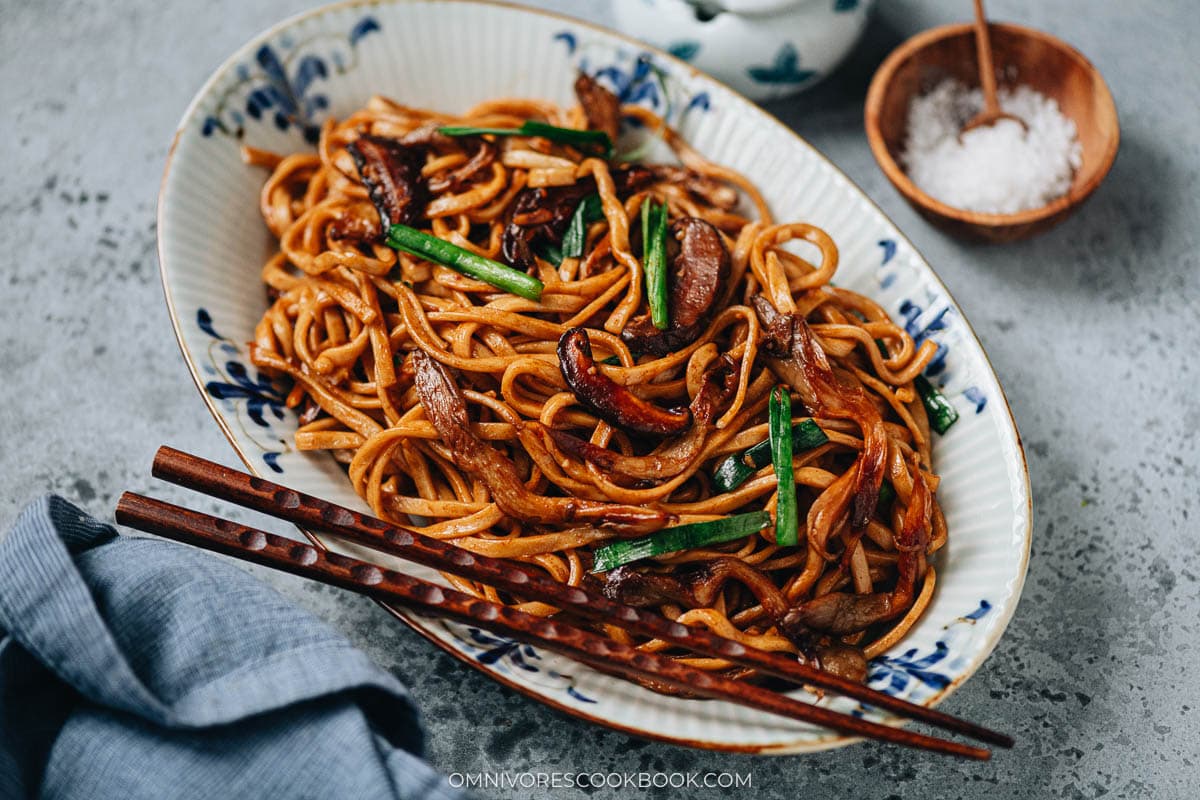
Set up
When you’re ready to cook, your table should have:
- Shiitake mushrooms, rehydrated and sliced
- Oyster mushrooms, torn to bite-size pieces
- Garlic chives (or scallions): sliced
- Noodles
- Mixed sauce
- Shaoxing wine + reserved mushroom soaking water on the side to deglaze the pan
- Minced ginger and garlic
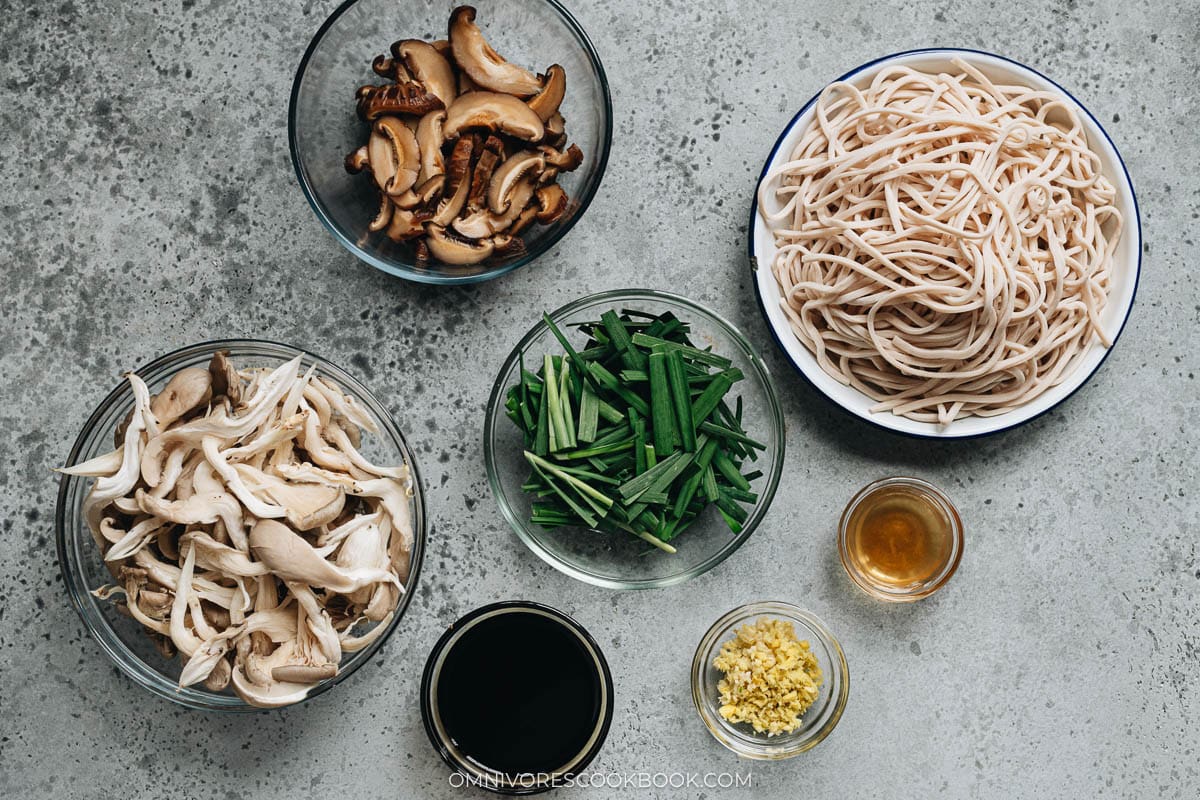
How to cook longevity noodles
Cooking longevity noodles is really quick once you have everything ready.
First, boil the noodles according to the package instructions. I always like to boil the noodles to an al dente texture (usually one minute less than the cooking time on the package), so the noodles still have their chewy texture once stir fried.
Pan fry the mushrooms and shiitake mushrooms until browned. Then add the aromatics and stir to mix. Then deglaze the pan with Shaoxing wine and the mushroom soaking water.
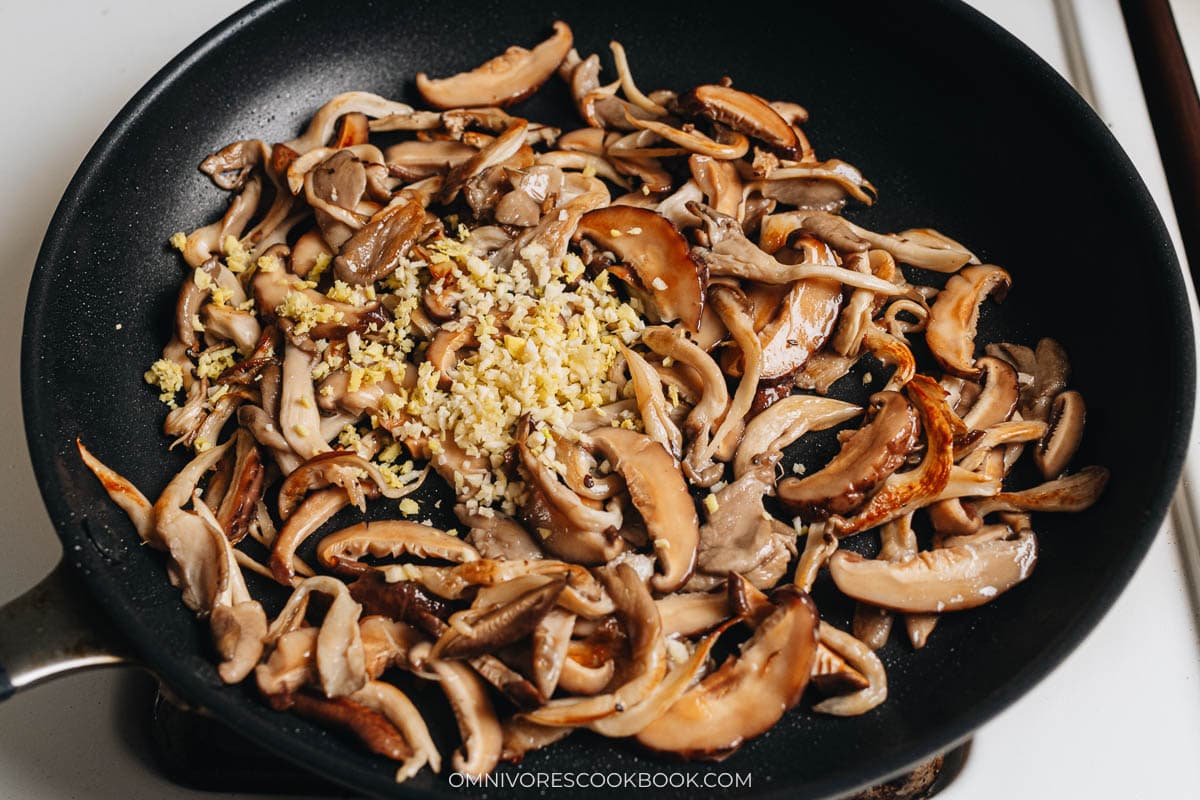
Then add the noodles and the sauce. Toss to mix together. Then cook with the garlic chives until wilted.
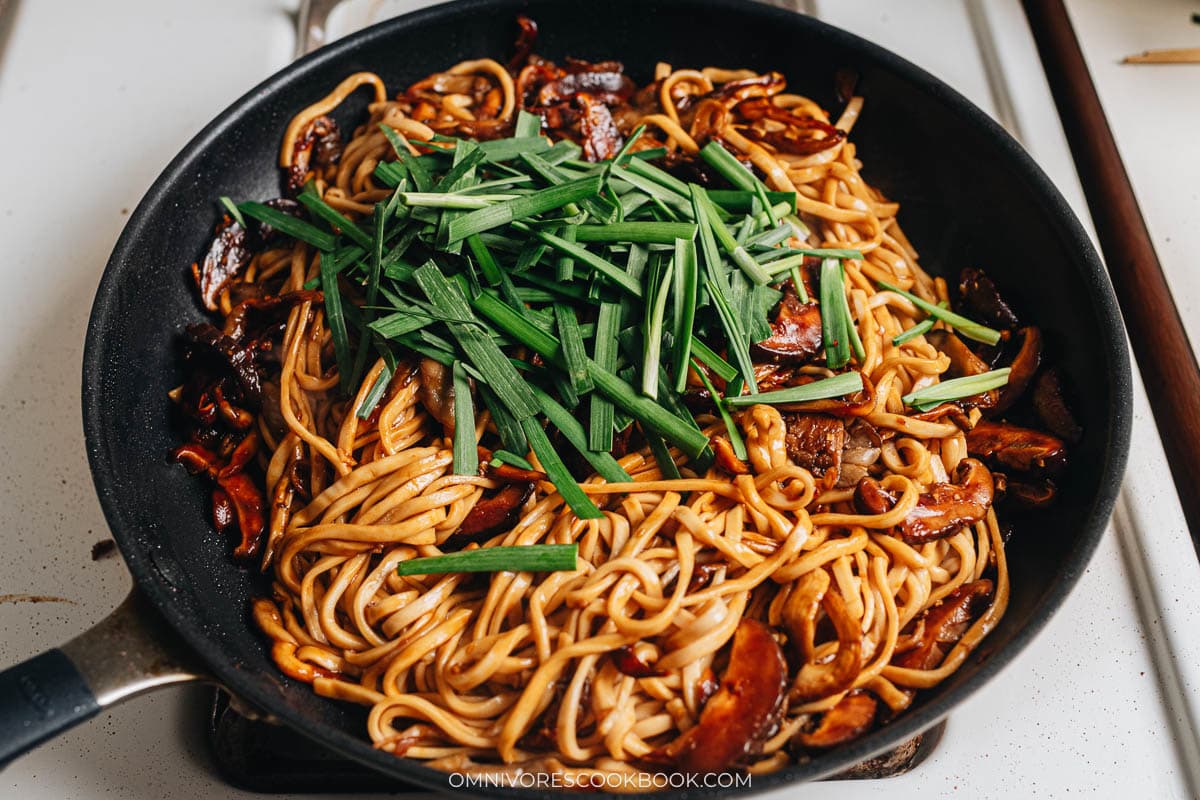
That’s it! Now you have a plate of chewy noodles that are bursting with flavor, with a fun texture added by the mushrooms.
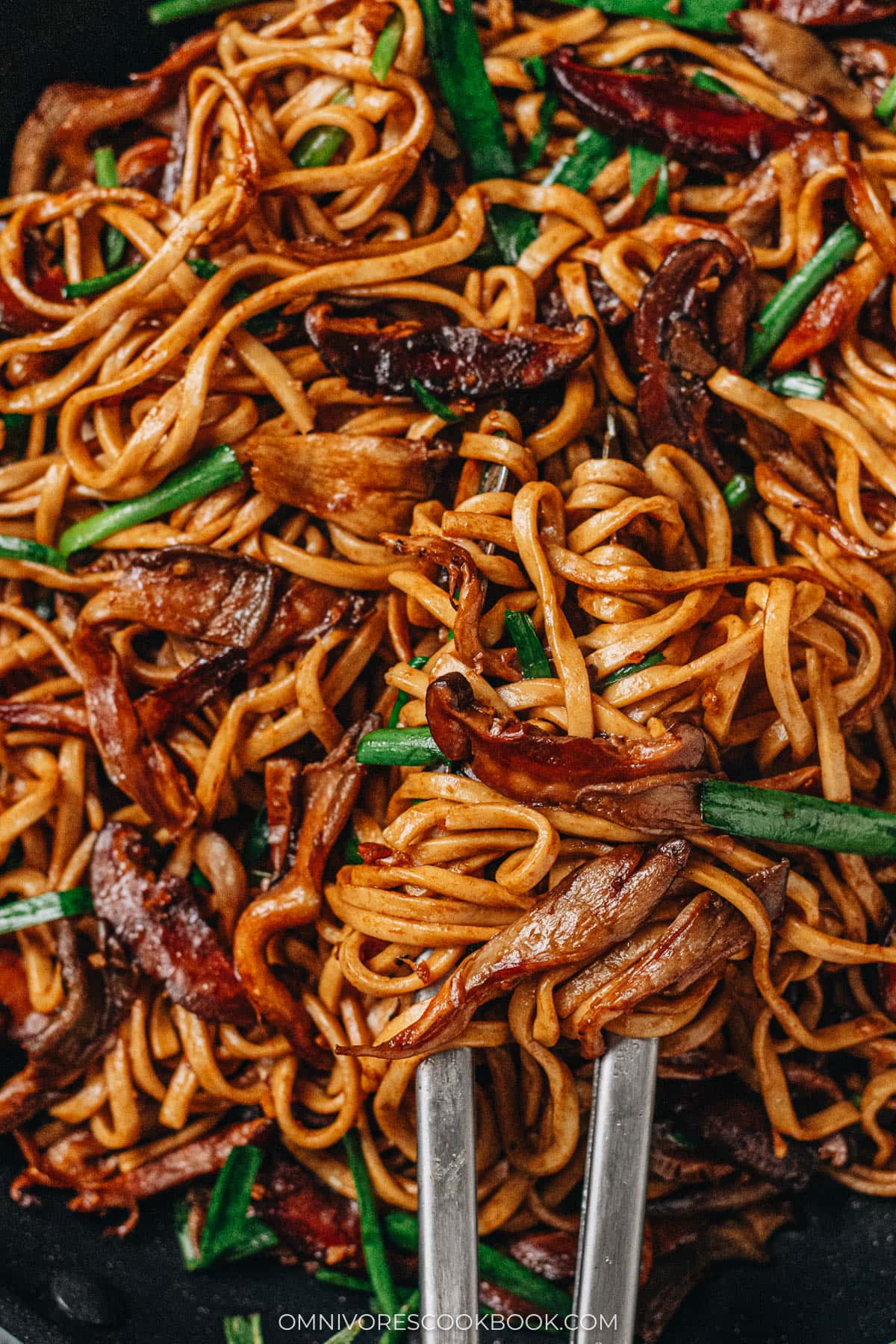
How to serve longevity noodles
Whether you’re celebrating a special occasion or simply savoring a comforting meal, longevity noodles with Yi Mein are a great idea. Like I mentioned above, you can serve this dish by itself as a one pan meal by adding a protein. You can also share this dish as a side dish for a multi-course dinner.
Here are some ideas for a dinner celebrating Chinese New Year:
What’s your favorite way to enjoy Yi Mein? Share your variations in the comments below!
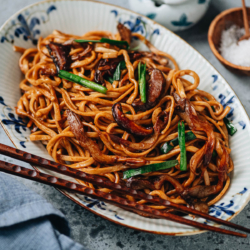
Longevity Noodles (Yi Mein, 伊面)
Celebrate Lunar New Year with these longevity noodles made with chewy Yi Mein and mushrooms, brought together with a savory brown sauce and aromatics. {Vegetarian-Adaptable}
Ingredients
Stir fry
- 12 oz (340 g) thick Shanghai Noodles (or udon noodles) (*Footnote 2)
- 2 tablespoons peanut oil (or vegetable oil)
- 1/2 lb (227 g) oyster mushrooms (or any other mushroom you prefer), cut to bite-size pieces
- 2 cloves garlic minced
- 1 teaspoon minced ginger
- 1 tablespoon Shaoxing wine
- 2 tablespoons mushroom soaking water
- 8 stalks garlic chives or 4 green onions, cut into 1” (5 cm) pieces
Instructions
-
Add the shiitake mushrooms into a medium-sized bowl and add enough warm water to cover. Rehydrate for 15 to 20 minutes, until the mushrooms have turned tender throughout. Reserve 2 tablespoons of mushroom soaking water. Drain the mushrooms and thinly slice them.
-
Boil the noodles according to instructions. Then drain, rinse the noodles with cold running tap water to stop cooking and rinse off excess starch. Drain thoroughly and set aside.
-
Heat the oil in a large pan or wok over high heat. Add the oyster mushrooms. Let sear, stirring occasionally, until golden, about 3 minutes.
-
Add the sliced shiitakes. Stir and cook until the shiitakes gain some color, about 1 minute.
-
Add the ginger and garlic into the pan, and toss for 30 seconds. Pour in the Shaoxing wine and the 2 tablespoons mushroom soaking water. Stir to deglaze the pan.
-
Add the boiled noodles and toss a few times. Then drizzle the sauce over the noodles. Stir and cook until the noodles are evenly coated.
-
Add the garlic chives. Stir and cook for an additional 2 minutes, or until the chives are wilted and the sauce is fully absorbed by the yi mein. Transfer the noodles to a serving platter.
Notes
- Vegan / Vegetarian Adaption: Use vegetarian oyster sauce to make this dish vegetarian.
- The fresh thick Shanghai noodles yield the best result due to their chewy texture. If you can get high quality fresh or dried udon noodles, they make a great alternative. When fresh noodles are not available, regular dried wheat noodles or spaghetti will work as well.
Nutrition
Serving: 1serving, Calories: 381kcal, Carbohydrates: 63.4g, Protein: 13.7g, Fat: 9.2g, Saturated Fat: 1.2g, Sodium: 1534mg, Potassium: 374mg, Fiber: 5.3g, Sugar: 10.5g, Calcium: 16mg, Iron: 4mg

